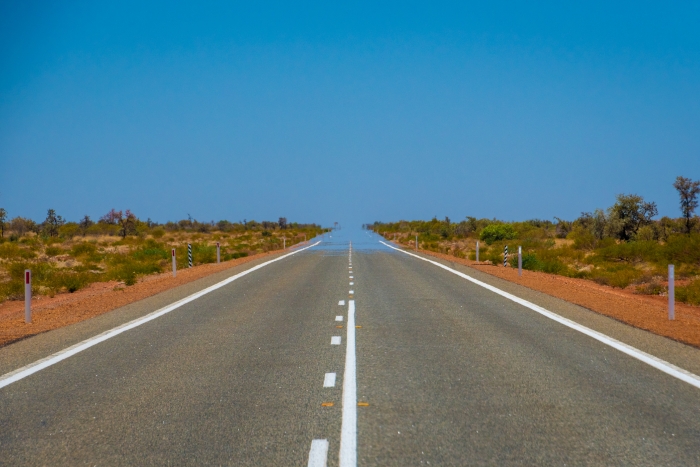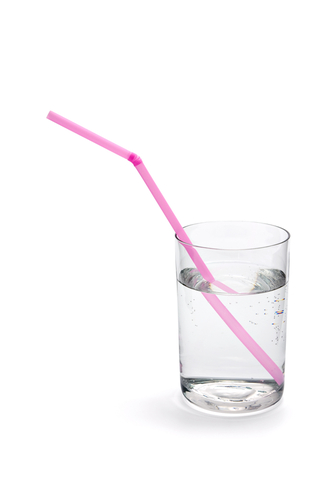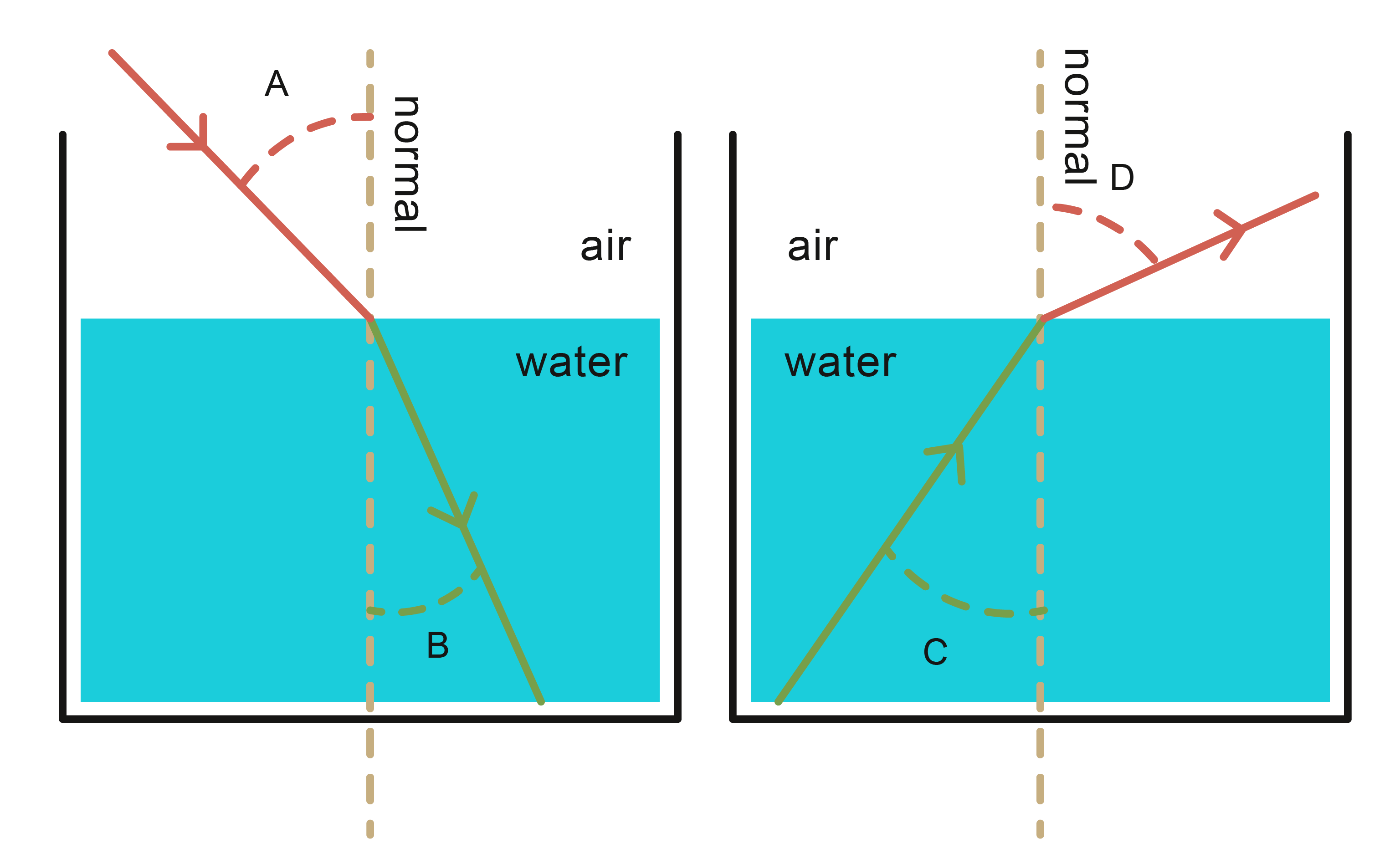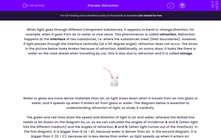What is refraction?
When light goes through different transparent substances, (for example, from air to water), it appears to bend or change direction. This phenomenon is called refraction. Refraction happens at the interface of two substances, i.e. where the substances meet (their boundaries). However, if light passes through the interface vertically (at a 90 degree angle), refraction does not occur.

The straw in the picture below looks broken because of refraction. Additionally, on sunny days, it looks like there is water on the road ahead when travelling by car, as shown in the photograph above. This is also due to refraction, caused by differences in air temperature making the light change direction. It is called an optical illusion or mirage.

Why does light refract?
Water or glass are more dense materials than air, so light slows down when it travels from air into glass or water (and it speeds up again when it travels from glass or water back into the air). The change of speed results in a change of direction. This is why the light bends. The diagram below shows the process of a beam of light refracting.

You will notice a dotted line making a right angle with the surface. This is called the normal, and is an imaginary line. We use it to measure the angles of incidence and refraction. These are labelled A to D on the diagrams.
The green line represents light in water, and the red line is light in air. In the first diagram, light slows down as it travels from air to water (because water is more optically dense than air), causing it to slow down and bend towards the normal. The angle of incidence (A) is greater than the angle of refraction (B).
The exact opposite effect happens when light travels from water back into the air: the light speeds up and bends away from the normal. The angle of incidence (C) is less than the angle of refraction (D).
Summary
To sum up, refraction is the bending of light rays caused by the change in their speed as they pass from one transparent medium to another. This causes objects to appear bent or broken. The amount the light bends is determined by the 'optical density' of the material (which is also called refractive index).
Let's try some questions on this now.







